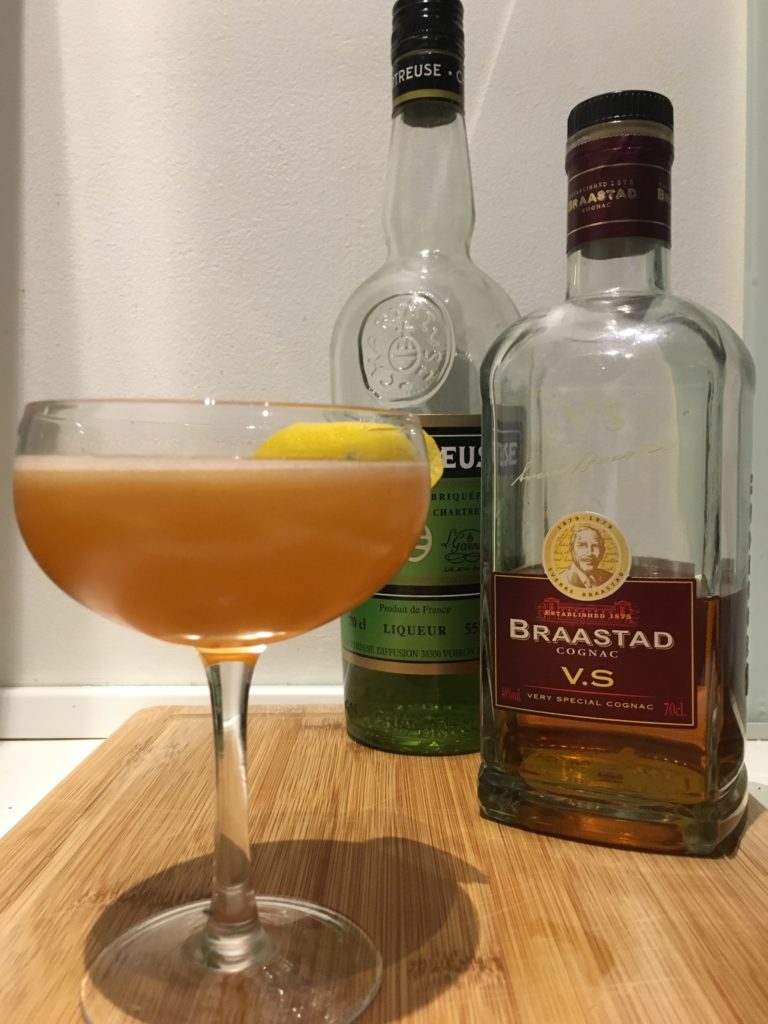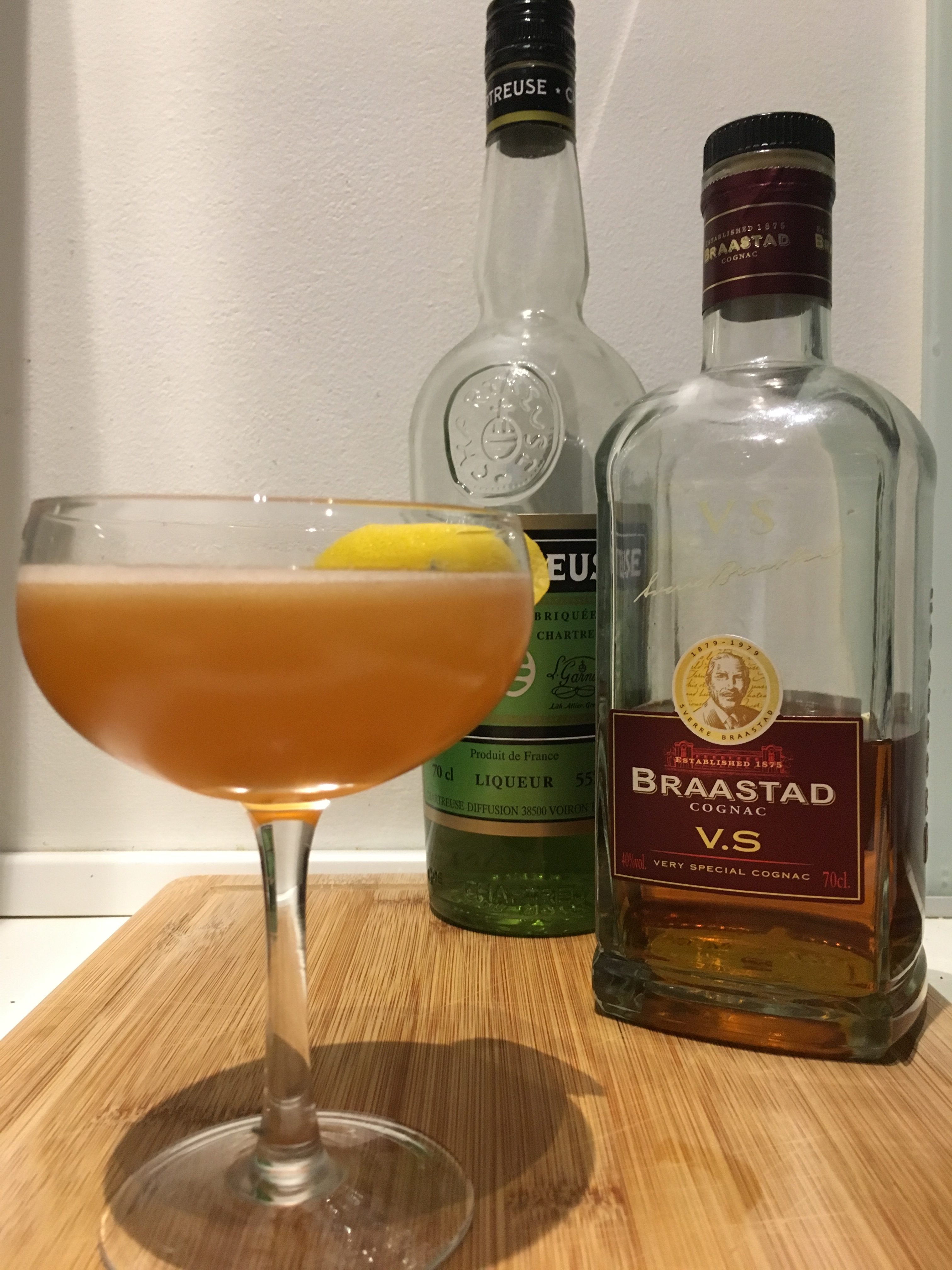A prohibition era cocktail with strong French influences, this cocktail first appeared in the savoy cocktail book. To begin with the name is the same as one of the most famous streets in France. But if a cocktail as a name as French as this one, it should probably have the most French spirit as base as well. Now we have a French name and a French base spirit, then one may ask oneself: How can the cocktail be made more French? This is answered by the use of green chartreuse. Other liqueurs or vermouths may be used for the same effect however. The big advantage of the chartreuse is its strong flavour and uniqueness. Any cocktail with chartreuse that I have tasted with chartreuse is distinct, while perhaps not appropriate in every cocktail when it is utilised in the right way it is fantastic. I am not perhaps the most knowledgeable in French culture, cuisine and drinks. Perhaps it is that it makes some of what I have written a bit inaccurate and even more so superficial with the connection only through where the spirit is from rather than through culture. There is another cocktail that people argue about regarding France, the French 75. In that cocktail, there is a debate with regards to the use of gin or cognac. The early recipes which resembles the cocktail we know today, which is a basic sour topped with champagne, used gin. It wasn’t until the mid 20th century that cognac started appearing in the recipes. There are people strongly arguing that the cocktail should use cognac due to its name, though there are other reasons for the name. This would be an example of how everything I wrote in the beginning may be completely wrong.
Focusing on the Champs Elysees, the base spirit, the cognac shines through. If a bad cognac is used, you will definitely notice. When it comes to cognac and cocktails, I would usually recommend a VSOP, though as can be seen I use a VS here, however, I have tried this cognac and found it to be quite nice, though a VSOP would be a safer bet if you don’t have any experience with cognac. The difference between higher levels and VSOP will perhaps be noticeable but when comparing the improvement in relation to the price I, personally, don’t think it’s worth the price. The chartreuse while, it is only used in a small amount it is very noticeable, however, it does not take over the flavour at all. With the lemon, simple syrup and the bitters, taking a smaller role in the balancing of this cocktail. In all this is a fantastic cocktail to see how wonderful cognac can be when mixed, as well as understanding how chartreuse should be used in a cocktail. Then the question would be is it worth doing on your own, where I would say perhaps. It might be hard to argue for buying chartreuse, though there are a few cocktails that use chartreuse, such as the Bijou, last word and this, that are all brilliant. The other ingredients are not as hard to come by and easier to argue for. In all, I would say it is worth making this yourself, or if you see a bottle of chartreuse in the bar, perhaps ask for it there, though you might need to explain the cocktail.
My Recipe:
- 2 oz (6 cl) Cognac
- 0.75 oz (2.25 cl) Lemon Juice
- 0.5 oz (1.5 cl) Green Chartreuse
- 0.25 cl (0.75 cl) Simple Syrup
- 1 dash Angostura Bitters
Add the ingredients to a shaker with ice. Shake and strain into a chilled coupe glass. Garnish with a lemon twist.

